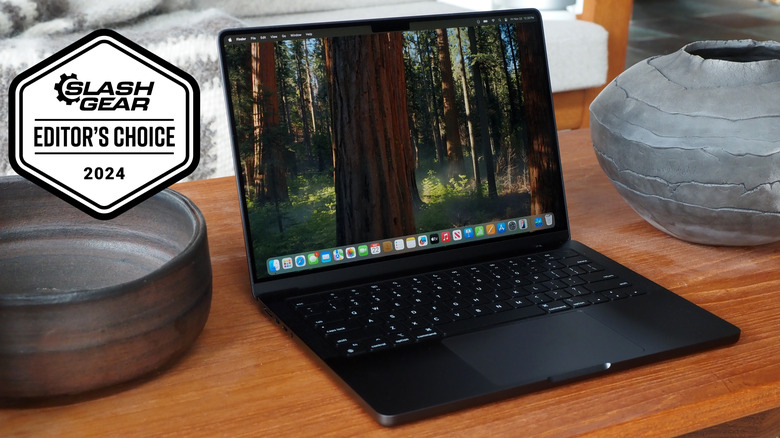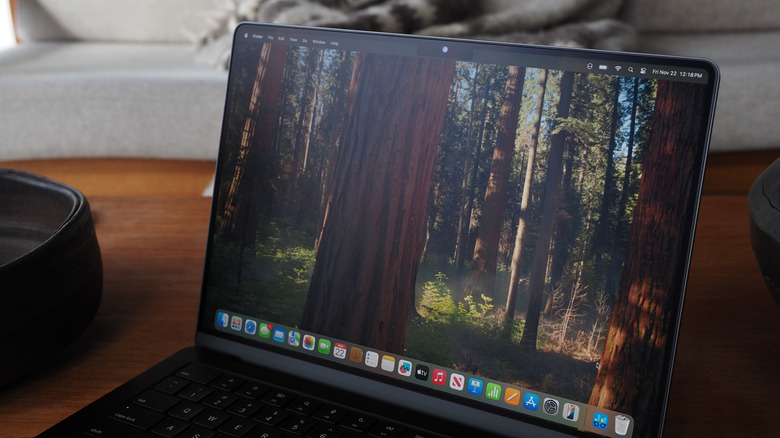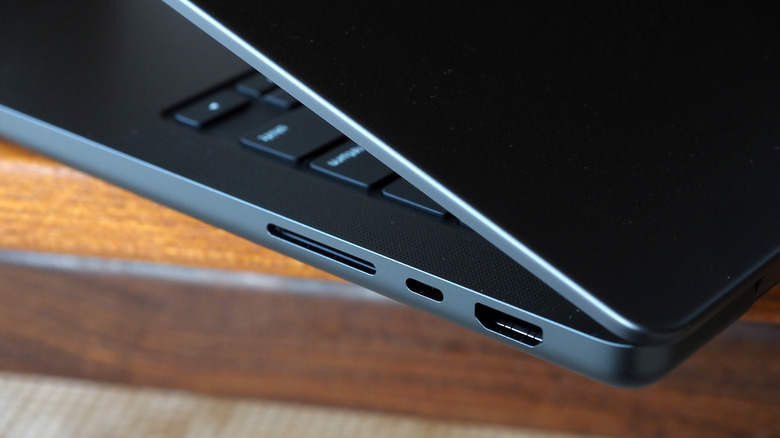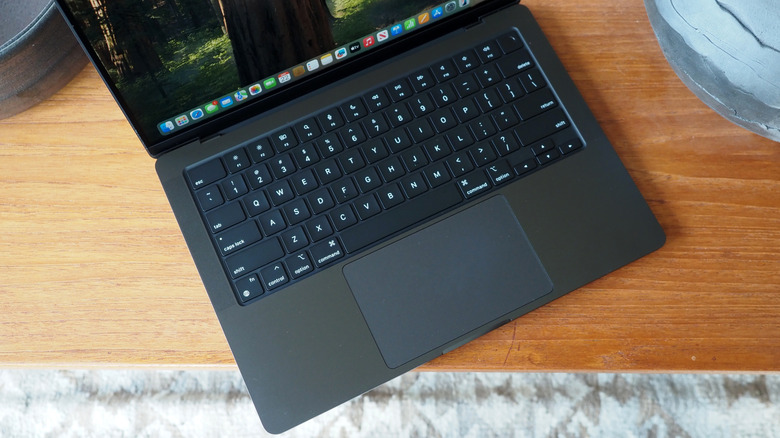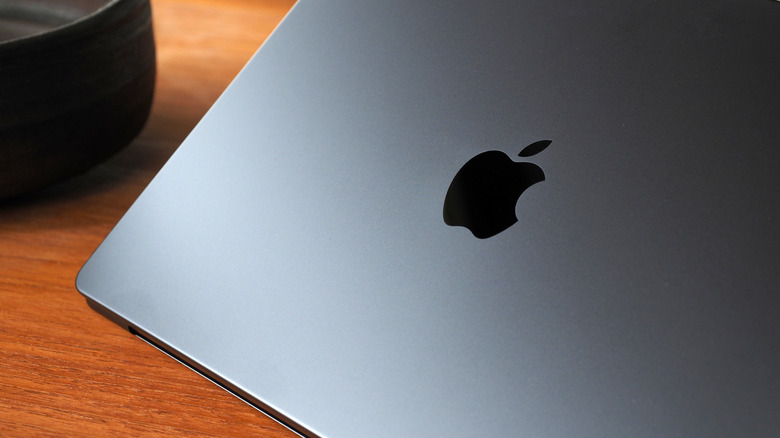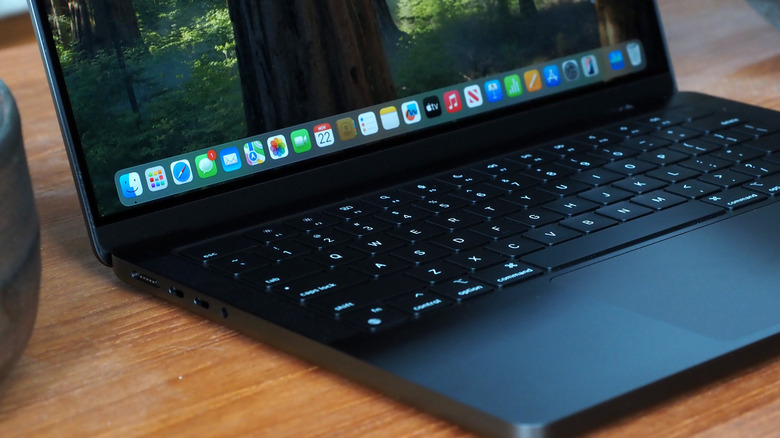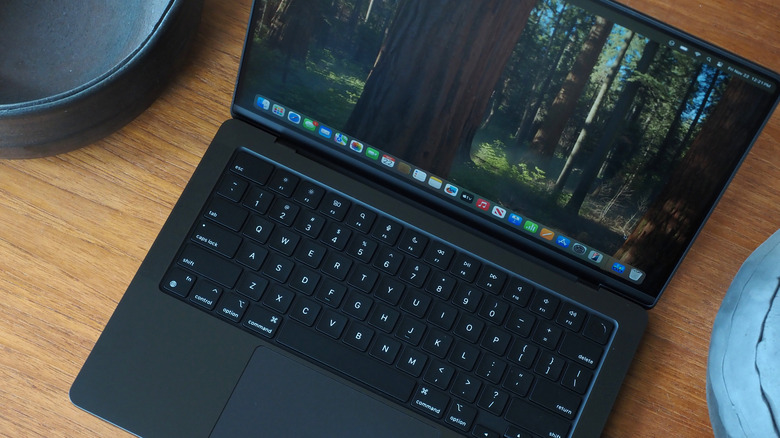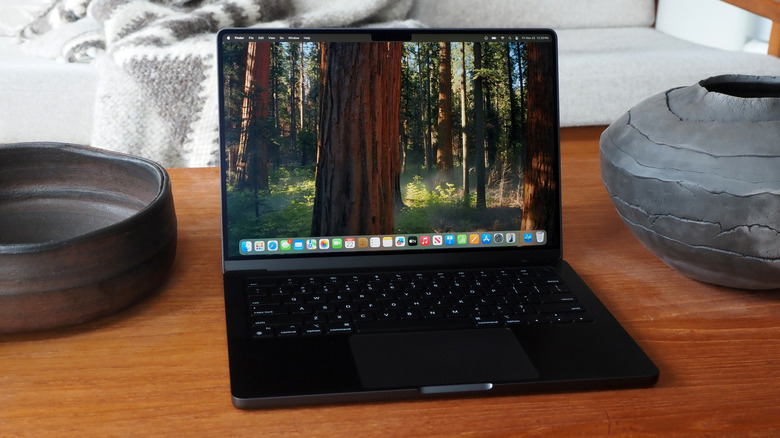Apple MacBook Pro M4 Max Review: Easy On The Eyes, Hard On The Wallet
- Epic performance
- Nano-texture display is a must-have
- Lengthy battery life
- Expensive for higher-end configurations
- No Wi-Fi 7
We may receive a commission on purchases made from links.
Apple's argument for the MacBook Pro is simple: you buy it if you need, or just want, more. Flagship of the portable Mac line-up, the MacBook Pro has seen its successes and flubs over the years — Apple Silicon definitely falling under the former heading; the much-maligned Touch Bar banished to the latter — but the core recipe remains the same. For 2024, that means a trio of new homegrown chips, with the top-end M4 Max commanding hefty performance and a hefty price tag.
For many, a MacBook Air will be more than enough laptop for their day to day needs. The M3-based version launched earlier in 2024 combines ready portability and plenty of power, in a relatively affordable package; not for nothing did we give it the SlashGear Editor's Choice award. And yet, there are those who do need more power; power at desktop-rivaling levels, in fact, but without actually being tied to that desk.
There are many sensible, rational reasons for wanting this 2024 MacBook Pro. I feel guilty for being so easily swayed, then, but it must be said that there's undoubtedly something lovely about the Space Black finish MacBook Pro (a no-cost option across the range). It also, strangely enough, leaves the laptop looking smaller to my eyes, compared to the silver version.
You should splurge for the nano-texture display
Apple has wisely left alone what works. The keyboard features the same, excellent switches as before; the trackpad is the same expansive stretch of perfectly-textured glass. Touch ID in the power button may feel a little old-school, now, compared to Face ID in so many of Apple's other devices, but it's swift and consistent
What is new is the nano-texture display option. While as standard, the 14- or 16-inch Liquid XDR screen is glossy, for $150 more Apple will give it a reflection-cutting finish, similar to what's already offered on the Pro Display XDR. Apple bills it as ideal for those using their laptop outside, but frankly even as someone who spends most of their time indoors, the cut in glare and reflections is hugely welcome. It's far easier on the eyes, and though I feared getting off the inevitable fingerprint smudges, they turned out to be readily vanquished too.
Standard definition (SDR) brightness is up, too, from 600 nits in the previous-gen laptops, to 1,000 nits here. HDR brightness remains at a 1,600 nits. Honestly, I'm more impressed by the minimum brightness, which can now crank down noticeably lower than in earlier models.
The biggest changes pave way for the future
Most of the changes for this 2024 generation of MacBook Pro aren't so visible, though. The M4 Pro and M4 Max based models get a port bump, with Thunderbolt 5 supporting up to 120 Gb/s data transfer speeds. If you're regularly plugging in bandwidth-heavy accessories for video or music editing, that could definitely pay dividends, as could the M4 Max's ability to drive up to four external displays (the others top out at two).
As before, there are three USB-C Thunderbolt 5 ports, an HDMI port supporting up to 8K video, and an SDXC card slot. MagSafe 3 is used for charging — if your USB-C cable isn't also supplying power — and Space Black versions of the laptop get a matching black cable, though sadly the power brick itself is still white. Inside, there's Wi-Fi 6E (not Wi-Fi 7 as is the case for the iPhone 16) and Bluetooth 5.3 support.
Apple has also changed the camera, which still lives in a notch cutting into the top of the screen (and which, personally, I still don't find offensive as a design, though I know some still find it infuriating). It's 12-megapixels in resolution, and supports features like Center Stage (like in the 2024 iMac) to keep you virtually centered in the frame. I've been more swayed by its uptick in mixed lighting performance, though, with the camera doing better at not being overwhelmed by brighter backgrounds during video calls.
Hope you've got a big budget
2024 MacBook Pro ownership kicks off reasonably affordably, with the $1,599 14-inch model using the Apple M4 chipset. Of course, a bigger screen, more memory, more storage, and — most impactful — the more potent M4 Pro and M4 Max chips can quickly send the price rocketing. Apple also doesn't offer 16-inch configurations with the base M4, only the M4 Pro and up, so if you want the bigger display you're looking at a minimum of $2,499.
The cheapest M4 Pro with 14-inch screen comes in at $1,999. Then, there's a jump to $3,199 for the M4 Max version of that notebook, or from $3,499 for the 16-inch version.
The example you see here is a 14-inch M4 Max, though not the off-the-shelf version of the chip with a 14-core CPU and 32-core GPU, 36GB of unified memory, and 1TB of SSD storage. Instead, it has the $300 upgrade to the 16-core CPU and 40-core GPU, is maxed-out with 128GB of unified memory (for $1,200), and a 4TB SSD ($1,000; you spend $2,200 if you want the maximum 8TB).
With the matte display, that's $5,849 all-in. For those who prefer the larger screen, you're looking at $6,149 for the same configuration in 16-inch form.
M4 Max is a genuine powerhouse
Expensive? Certainly. Powerful? Heavens, yes. Benchmarks are of limited use, generally, since different people have different expectations and applications in mind. Still, they're a good way of setting a frame of reference.
In the popular Geekbench 6 test, the M4 Max scored 4,005 in the single-core CPU test, and 26,679 in the multi-core version. It delivered a 115,734 OpenCL score. Turning to Cinebench R23, the MacBook Pro scored 2,233 points in the single-core CPU test, and 25,748 points in the multi-core test.
Test-depending, you can probably figure on a 10-30% improvement compared to the previous-generation M3 Max. Finally, in the Blackmagic Disk Speed Test — which pressure tests the SSD — the MacBook Pro managed just over 7,200 MB/s write rates, and almost 5,900 MB/s read rates.
For battery life, Apple quotes up to 24 hours for the 16-inch model; the 14-inch sheds a couple of hours from that estimate. That's a considerable uptick over previous generations, though unsurprisingly it's highly dependent on configuration and how you're using your laptop. Apple's tests, for comparison, include cycling through loading 25 different websites over WiFi, and streaming 1080p video in Safari, with screen brightness roughly halfway.
Fast at daily tasks, and ready for Apple Intelligence
In contrast, my typical day of writing, plenty of browsing, editing images in Affinity Photo, and watching the occasional streaming video clocked in at over 12 hours. Affinity trimmed roughly 40% off the processing times for HDR images, compared to my usual MacBook Pro M2 Max. When I loaded up Final Cut Pro X and did some 4K video exports, files completed in roughly half the time.
Top of Apple's billing for the new MacBook Pro series — and the M4 chipsets at its heart — is Apple Intelligence. As with the AI features progressively rolling out on the iPhone and iPad, what's promised is fairly conservative to begin with. Writing Tools, available across macOS, taps AI to automatically proofread your text and, if desired, rewrite it according to different styles: more business-friendly for your boss, say.
Summaries of webpages and documents rely on AI to pluck out the most salient points, condensing them into (potentially) pithy excepts, while Siri interactions can segue between voice and text. With future updates, Siri should be able to do more in individual apps, and tap its contextual awareness of each user to personalize results and actions. There'll be optional ChatGPT integration into both Siri and Writing Tools come December.
The AI works, if you want it
As with the iPhone and iPad experience, Apple says user data is protected with either on-Mac processing or using the locked-down Private Cloud Compute servers. Once ChatGPT support is enabled, Mac users will be able to access it for free and an account will be optional; Apple claims it'll obscure individual IP addresses, and OpenAI won't be saving any requests made. Processing done on Apple's servers is powered by renewable energy. If you don't want it, you don't have to turn it all on: out of the box, it's switched off by default.
There is no doubt that Apple Intelligence — at least, what's publicly accessible of it today — works, in that it does something. Summaries are written; email tones are translated. Just as with my experience on the latest iPad mini, however, I'm simply not convinced any of this is meaningfully useful outside of keynote demos, and certainly not when the side-effects of AI are taken into account.
I'm able to write my own emails, and tone-switch as necessary; I don't trust AI sufficiently to rely on it to distill every key element from a document into a summary I'd blindly send on (and effectively be vouching for its accuracy in the process). And, as applications of artificial intelligence increase, particularly those from ChatGPT, I'm not confident of being insulated from AI's tendency to hallucinate erroneous data. That's before you get to the fact that these huge, input-hungry datasets powering many AI engines are reliant on vast quantities of human-created art and text, with questionable legality for its collection.
MacBook Pro (2024) Verdict
The irony, here, is that Apple has made a MacBook Pro that's arguably a creative human's dream. More powerful than before, more flexible; its most potent chips, paired with its best connectivity, and its most pleasant powerful. Forgive me, then, if I'm far more excited about how real, flesh-and-blood people tap the potency on offer.
As usual, life on the bleeding edge may leave you waiting for everything else to catch up. You're paying, after all, for longevity: there aren't really all that many Thunderbolt 5 peripherals out there, for example, but at least your Mac will be ready for them. In the meantime, you're also paying for the joy of shaving a little time off each photo and video export, each render, and each compile.
For mainstream users, the M4 Pro is probably the sweet spot: more than enough grunt, but with less sticker shock. Spending some of that saved cash on the nano-texture display option is a no-brainer, too. Yet if you genuinely need something close to the performance of Apple's most potent Mac desktops, but which can still be dropped into a backpack and used on the move, 2024's MacBook Pro M4 Max continues Apple Silicon's astonishing ascent. You'll pay for that capability, but those with the budget are unlikely to be disappointed by the all-round package.
You'll find the MacBook Pro M4 Max on Amazon right now with a few options for features. You can also purchase the MacBook Pro M4 Max from the Apple Store online in a variety of configurations.
